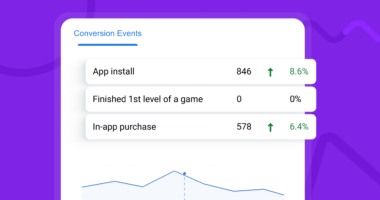Alright, you have a website – but how to make money off of it?
Instead of just listing 20, 30, 60, 100+ ways to make money I’ve filtered your possibilities down to 10 effective and straightforward ways. These are separated into two main categories: advertising and things you can do on your own.
Typically, under this keyword for “make money with a website” you’ll find neverending lists of ways to make money that overlap or are literally the same thing just reworded. Or they’re monetization methods that don’t have all that much to do with being a website owner. Or require a very specific, often irrelevant, skillset.
This list is designed for those with websites who want to profit off the traffic, views and clicks it generates. Plus, the potential of users loyal to this brand. Also, most of these methods to making money can be combined and utilized simultaneously for the same website.
2 main approaches to make money online with a website
There are two basic approaches to making money off your website.
First, the strategies based on your brand power: making paid content, setting up a subscription model, selling products, asking for donations and more. These all greatly rely on how much your visitors care about you (or your website simply). Also, how valuable your premium content is to them.
These strategies can yield higher profits generally, but also require more work to get started and maintain.
And second, advertising. I’ll give away the big advantage: this is the more effortless of the two. It’s a far less labor intensive, reliable and consistent source of income for you, the website owner.

Brand-based monetization (1-5)
Strategies 1 to 5 of making money heavily rely on how much users value your content. In essence, their loyalty and sustained interest in your brand, what you have to say, or your website in general.
This also includes how unique your website, ie. how easy it is to find the same / similar content elsewhere online (hopefully not 😉 ).
If you are confident in these areas with regard to audience loyalty and engagement, the next few strategies are solid ways to make money with a website you own.
However, the following ways to monetize are also going to be more labor intensive overall (compared to simply advertising). You’re going to have to invest a significant amount of time (and some money depending on the strategy) into making money.
This inherently means you’ll have less time to generate content and maintain your website. Take this into account when planning your monetization approaches: how much time will you need to allot towards making money, how much will you be left with to manage your website, and of course time left for anything not related to your website. 😉
Like I said before, keep in mind that these ways to make money can be combined / used at the same time as others from both this category and from advertising.
Advertising-based ways to make money with a website (6-10)
Aside from the previously mentioned methods to monetizing your website, you of course have advertising.
Advertising on your website is fairly easy to get set up and going. In fact, in a lot of these advertising approaches you don’t have too much if anything to make money once it’s all set up.
This leaves you with the time you need to produce quality content that will keep your users coming back, engaged and clicking.
Because after all, the traffic is the valuable part of your website.
Another big pro of advertising: it’s a more consistent and reliable stream of income than most of the methods I previously listed. All you need to ensure is the space on your website + the usual number of visitors your website garners. Selling your products or subscriptions or asking for donations may be seasonal, irregular, or eventually peeter out.
Granted, an obvious con of advertising is its impact on the user experience. You have to be careful here: don’t go overboard with ads… though it might be tempting since the more you allow the more money you make. However, if you flood your site with ads, users will eventually be deterred and stop visiting.
But, let’s get into the details + the pros and cons of each approach!
1. Offer Paid Content
If you just want to get your feet wet, consider generating some exclusive, paid content. For example, if your site is focused on baking, you can have a 50 page baking guide to cupcakes and everything cupcake-related available at a fixed price. As you expand, and based on the success of it, try making more.
But remember, the contents of this paid stuff needs to be extra valuable to a user and ideally, not found elsewhere on your website.
Paid premium content doesn’t just have to be some kind of ebook: think popular articles, a very thorough guide, or longer versions of videos / podcasts.
And that’s where we start veering into the subscription model. Eventually, it might just be more worth it for users to pay a monthly fee in order to be able to access all exclusive content. This doesn’t have to be detailed, it’s one of the most popular models in today’s day and age: Spotify, New York Times online.
However for users who are probably on a smaller scale, a tool like Patreon could be useful to offer subscription services and paid content to your audience.
As soon as you start offering paid premium content though, it’s essential to know how your content is doing. That can be done with the help of a tracking software like Voluum.
2. Subscription Model
The next step up from assorted paid content is providing a subscription model for your content for your website visitors. Making money online with a membership website is a more reliable to earn money than simply offering paid content. You’ll have a regular, consistent stream of passive income.
This model however also requires a lot more effort. For users to pay for a subscription, you’ll have to produce content – whether it be online courses, exclusive videos, daily articles, online tutoring, web developer services – on a regular basis. You have to make your membership site worth it for your viewers.
3. Make an online store
If you feel confident enough in your brand – and maybe at this point you’ve given paid exclusive content a successful shot – then a store could be the next step.
Let’s just be clear: I’m definitely not referring to a brick and mortar shop that your fans will be flocking to from far and wide. Also, don’t rush to find product designers and manufacturers to make huge orders of something you thought up just yet.
I think we both know the former would be jumping the gun 😉 However, there are smaller, easier, and much cheaper steps you can take to establish something of an ecommerce business or collection.
What you can sell in your own online store or ecommerce website strongly depends on how strong your branding is, the niche your website is situated in, and naturally, how much your audience is willing to spend on this niche and on your brand.
I’ve outlined two models for selling online: either physical or digital products (or both!).
In selling products online, you again have to be in total control of the selling process in the online space to know exactly how well your product is doing – and how much money you can potentially make. To do this, an affiliate tracking software like Voluum is essential.

Sell physical products
First off, the more traditional model that we are familiar with: selling products online.
If your website has a strong brand in its niche you can consider selling branded products as an ecommerce site. This would typically require finding a manufacturer. Consider a private label source if you want to create and make your own product with a strong personal touch.
Another way to sell unique products: custom print on demand. Find a manufacturer that will print your design (on whatever product that may be) when a customer makes an order and then ship it to them.
Alternatively, if your website deals with topics where you can sell certain products – ie. visitors are interested in eventually buying whatever they are reading about at the moment – you could sell generic products on your site. This can be done through any basic ecommerce model like reselling wholesale items, direct sourcing and even retail arbitrage.
Another option is dropshipping which involves the manufacturer sending the ordered product straight to the customer while you just handle the marketing. The dropshipping business model is generally more profitable but comes with its own risks as you can’t control a majority of the aspects of delivery.
Overall, the most important thing to pay attention to is how your sales are doing: what’s working and what isn’t. That’s where a software like Voluum can help. But more on that soon.
Online stores for digital products
Digital products are generally easier and cheaper to sell.
What exactly is a digital product? Think of the materials that can be presented as paid content, or in a subscription and try to package them as a standalone product. Let’s say for example: a full instruction manual on how to build your own keyboard with videos, or a 90 Keto diet plan Ebook with recipes, an online course on Search Engine Optimization, a website builder tool, or an extended version of your podcast.
Obviously, there are essentially no material or shipping costs with digital products since customers simply click, pay, and download / get access.
Seems pretty easy – and it can be. As long as you know what’s working. Especially if you start running paid campaigns to promote your digital content, then you’ll absolutely need a tracker. A tracker will make sure you stay on top of every visit, click and conversion on your site. This way you can optimize all your advertising efforts and eventually optimize them as well.
4. Ask for Donations
Here’s one that requires some love and attachment from your audience 😀 But at least it’s a straightforward, honest way to build a connection and profits 😉
Try really tailoring your message to your audience, you can even create differently worded messages for different groups. If you want to do this through some campaigns, a tracker can help you see which messages are working where, and who they are and aren’t resonating with.
Just set up some kind of donation platform, make your message clear but personal, and see whether you’ll start making enough for a worthy profit. Either, you don’t have much to lose with this model.
5. Sell your website
What you do have a lot to lose with is selling your website 😀 Well, in the sense that if it’s sold, it’s sold 😉
So that’s why this is my final suggestion in this category… but selling your website isn’t necessarily all that easy.
Depending on how tied your content is to you personally, things can get tricky. If your website is based on your podcast philosophizing on the merits of affiliate marketing then it’s probably sprinkled with your humor, personality, and anecdotes. If someone were to acquire that, they couldn’t recreate it and potentially would lose users without any new content.
But, if you have a website not so focused on yourself and more about the content strictly then it’s pretty easy to sell off. If you do have a personal touch, you can try diversifying with multiple “personalities” i.e. guests and contributors, see how they go and once your website is sold it can be more easily adapted.
6. Affiliate Marketing
Here at Voluum, affiliate marketing is our specialty and success story. It’s how our product came to be. And it’s quite a simple and profitable advertising model to implement on your website.
Affiliate marketing is when the owner of a product or service hands over the online marketing part to you, a third-party affiliate. You post links to where potential customers who are reading your blog or watching your video can buy “XYZ”. When those users make a purchase through that affiliate link (which brings them to either a lander or an order page) then you get a commission for that sale. Affiliate sales are a pretty reliable and passive source of income.
There’s a huge variety of products out there that you can market or promote on your website. You just need to join an affiliate program and choose what fits your website’s niche and profile. Here’s a comprehensive guide to 2022’s best affiliate programs.
Another option is contacting companies directly. If you have already reviewed or talked about certain products before, you can reach out to that company and see if they’d be willing to work out an affiliate agreement.
Affiliate marketing works – however, the essential is keeping track of every sale you make. And every sale that’s unsuccessful. This will give you key insights into which copy, images, and placements work best to convince your users to buy. How to do that? With an affiliate marketing tracking software like Voluum.

7. Lead Generation
Lead generation as an affiliate is a similar concept as affiliate marketing, but it’s typically easier to convert users. Consequently, your payouts will also be lower.
Lead generation is when you gather data on prospective customers. This can be in the form of emails, phone numbers, addresses. So, the usual pieces of information needed to contact people in marketing campaigns. Depending on your online presence you can apply for affiliate programs that cater to lead generation commissions. Most service-based industries pay pretty good money for leads.
But the trick is you usually need to qualify those leads. This means you need to confirm that they’re genuinely interested in the offer / online business / service. Affiliate lead generation is another sector that requires close attention and tracking to make sure every aspect of your efforts are as profitable as possible.
8. Sponsored Posts
Another form of advertising: sponsored posts. I’m sure it’s caught your eye before on Instagram, Facebook, Buzzfeed, any newspaper: “Paid for by…”, “Sponsored content”, “Paid partnership”, #ad.
If your website has enough viewers, you can find a company with a product / service that you can promote for money. Sponsored posts can be a one-time deal or an agreement consisting of a few posts.
Another option is establishing a (paid) partnership wherein you regularly promote that company. In this model you can get paid per post, a commission for each sale made, or some kind of combination. The latter would require a similar type of tracking as in affiliate marketing.
9. Product Reviews
Along the same lines, you can post product reviews. These can be monetized in two main ways: either as sponsored posts or as affiliate marketing links.
If you’re making an honest review about a product you actually value then a sponsored post could be a better option. Or you are only focusing on one product.
Alternatively, if you’re making, for example, a video compilation with multiple products and companies featured, then inserting affiliate links would be a better bet. Most likely you won’t be able to find a company willing to sponsor posts that feature other products as well 😉
10. Selling Ad Space
Aside from affiliate marketing, one of the most passive sources of income is displaying ads on your website. You act as a publisher since your own site has a strong online presence with lots of traffic; therefore you can sell ad space. Also, this stream of profits from ad revenue tends to be more stable than the others. Of course, you have to keep up your traffic flow as well.
There are a few major ways to host advertisements on your website to make money online that I’ve separately listed here.

Text Link Ads
A Text link ad can be marketed through the Google Network or many other ad networks. These ads can appear in search results and across pages from within the given ad network. You sell links as advertising space and ecommerce websites, companies or brands pay for such links.
There are a variety of Text link ad types, but generally it consists of a hyperlinked piece of text that leads to a certain product related to that text. These differ from an affiliate link as it does not come from an affiliate network. What is known as text ads more generally are also different from a text link ad as these can appear in search engines results pages.
Display Ad Networks (like Google AdSense)
Joining a display ad network as a publisher is another way to get passive income. Your site will be providing the ad space for companies that want to advertise their products and services. The most prominent ad display network is Google AdSense. Aside from Google AdSense there are plenty of other networks though like Facebook Ads; the drawback with Google AdSense is their relatively low commissions. Most popular search engines have their own display ad networks.
Directly selling ad space to companies
The last option you have as a publisher is selling ad space directly to companies. For this, you have to either have a significantly large amount of traffic or a very strong position in your niche. You’ll need to have a decent position in order to be able to negotiate as a publisher.
Making money with your website
Whether you have your own website, your own online store or business, earning money online with your website couldn’t be easier. As long as you have traffic.
Earn money online with the help of an affiliate marketing software like Voluum to keep you on track.




